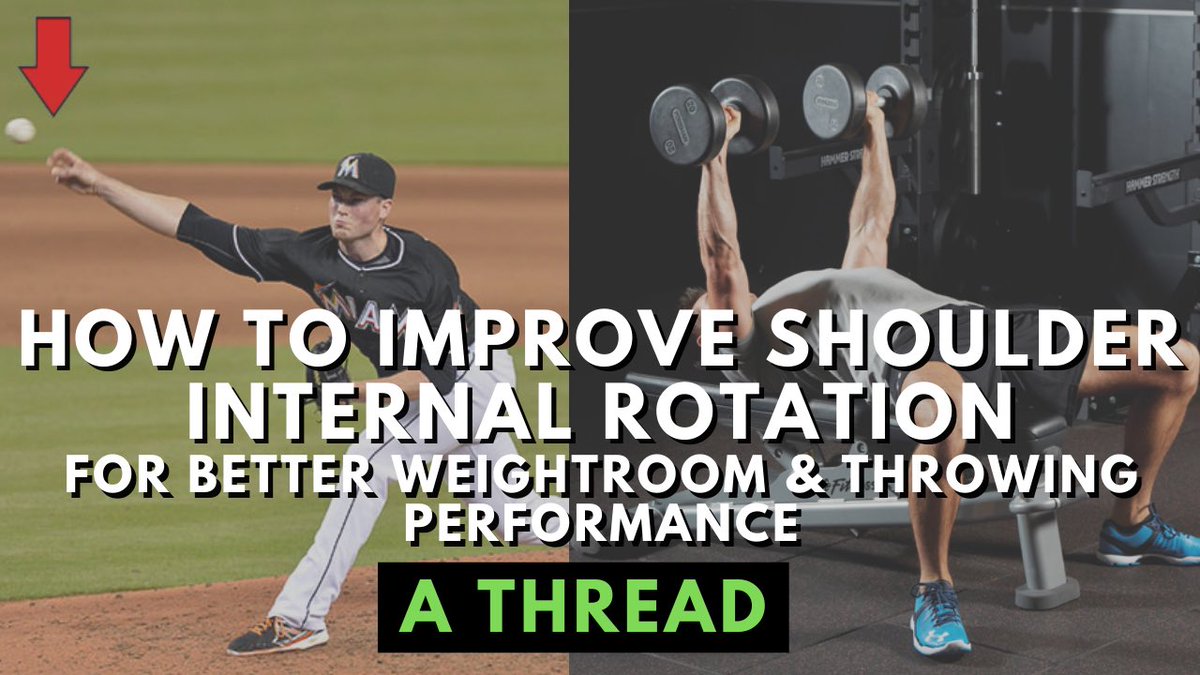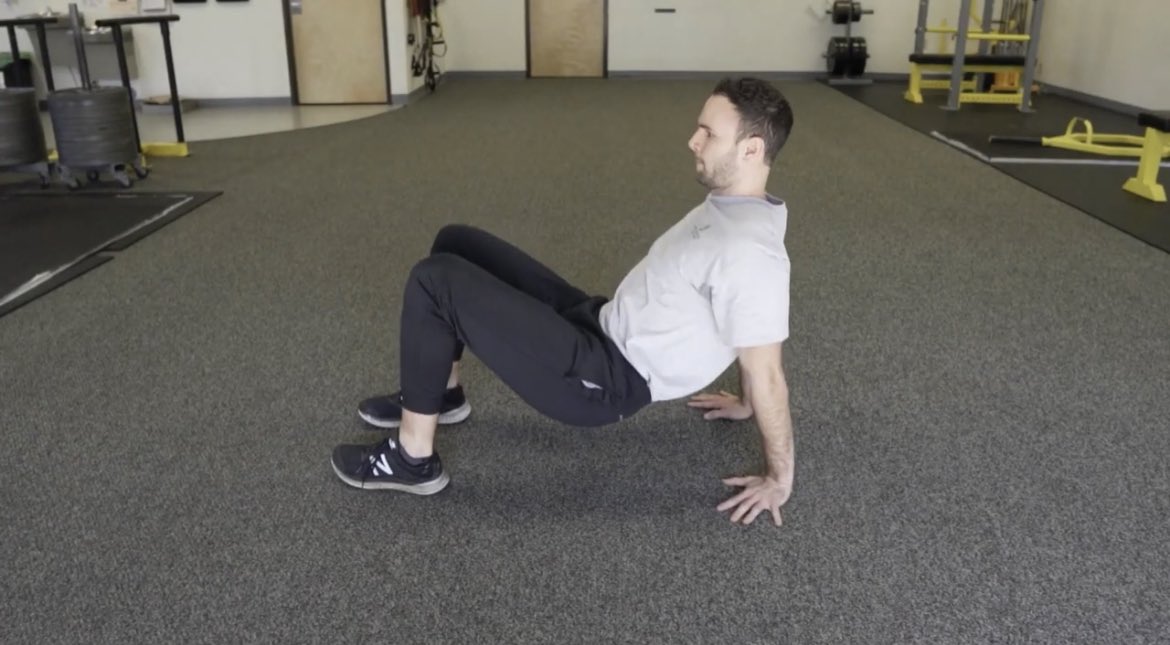A thread on how to restore internal rotation (IR) of the shoulder
If you want to:
- Throw anything
- Effectively execute pressing exercises
- Lift your arm above your head
- Have good posture
You want proper IR at the shoulder.
Similar to hip IR, it’s often missing in most...
If you want to:
- Throw anything
- Effectively execute pressing exercises
- Lift your arm above your head
- Have good posture
You want proper IR at the shoulder.
Similar to hip IR, it’s often missing in most...
people.
For a throwing athlete, internal rotation of the shoulder is essential for the transition from wind-up all the way to release.
Internal rotation velocities at the shoulder can reach ~7500 degrees/second in pitchers, so it’s important to have non-compensatory IR.
For a throwing athlete, internal rotation of the shoulder is essential for the transition from wind-up all the way to release.
Internal rotation velocities at the shoulder can reach ~7500 degrees/second in pitchers, so it’s important to have non-compensatory IR.
From a general movement perspective, IR is needed when the humerus is in 60-120ish degrees of overhead flexion (think of many pressing exercises)
It’s also necessary whenever the forearm is pronated, or the palm is turned inward/down.
It’s also necessary whenever the forearm is pronated, or the palm is turned inward/down.
To measure shoulder internal rotation effectively, see the video below.
Take a starting measurement now so you can try the exercises and re-test to see objective improvements.
Take a starting measurement now so you can try the exercises and re-test to see objective improvements.
Proper internal rotation requires the ability for the arm bone (humerus) translate forward within the shoulder joint without hitting/impinging on other structures around it.
Here is a visual example:
Here is a visual example:
When the humerus is forward, it often takes the visual appears of a rounded shoulder posture & scapular winging.
Usually in this circumstance, the lats & pecs are trying to be primary IR muscles because IR muscles at the rotator cuff like the subscapularis are limited.
Usually in this circumstance, the lats & pecs are trying to be primary IR muscles because IR muscles at the rotator cuff like the subscapularis are limited.
These muscles are compressing the anterior (front) ribcage and pulling the shoulders forward.
That means the chest struggles to expand upon inhalation and diaphragmatic breathing is limited.
When we inhale, we should have our shoulders move back to a slight degree.
That means the chest struggles to expand upon inhalation and diaphragmatic breathing is limited.
When we inhale, we should have our shoulders move back to a slight degree.
To restore it, we should re-train the anterior ribcage to expand and for the pecs to elongate & be able to let go.
A fantastic starting position is all four breathing. Because air is a gas that follows the path of least resistance, this allows gravity to push down and force air
A fantastic starting position is all four breathing. Because air is a gas that follows the path of least resistance, this allows gravity to push down and force air
into the front ribs.
Another great exercise is crab position breathing. This naturally pushes the shoulders back and air into the front ribcage while stretching the pecs.
Keep obliques engaged as you inhale.
Try both of those then re-test your shoulder internal rotation!
Another great exercise is crab position breathing. This naturally pushes the shoulders back and air into the front ribcage while stretching the pecs.
Keep obliques engaged as you inhale.
Try both of those then re-test your shoulder internal rotation!
Finally, it’s important to “own” the new range of motion through resisted activities.
I’m a fan of starting in a ground-based position and doing more traditional banded IR activities at this point since the ribcage is now in a better position to allow the rotator cuff to work:
I’m a fan of starting in a ground-based position and doing more traditional banded IR activities at this point since the ribcage is now in a better position to allow the rotator cuff to work:

 Read on Twitter
Read on Twitter







